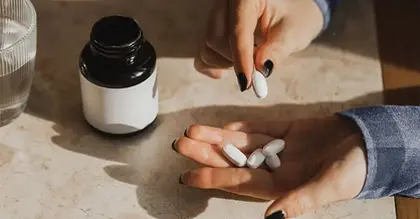Drug Detail:Rapivab (Peramivir [ per-am-i-vir ])
Generic Name: peramivir 600mg in 60mL
Dosage Form: injection, solution
Drug Class: Neuraminidase inhibitors
Dosage in Acute Uncomplicated Influenza
Administer RAPIVAB within 2 days of onset of symptoms of influenza.
Dosing in Patients with Renal Impairment
Significantly increased drug exposures were observed when RAPIVAB was administered to adult subjects with renal dysfunction [see Clinical Pharmacology (12.3)]. Therefore, the RAPIVAB dosage should be reduced for patients with baseline creatinine clearance below 50 mL/min using the recommendations in Table 1 and Table 2. No dosage adjustment is required for single administration of RAPIVAB in patients with creatinine clearance of 50 mL/min or higher [see Clinical Pharmacology (12.3)].
In patients with chronic renal impairment maintained on hemodialysis, RAPIVAB should be administered after dialysis at a dose adjusted based on renal function (Table 1 and Table 2) [see Clinical Pharmacology (12.3)].
| Creatinine Clearancea (mL/min) | |||
|---|---|---|---|
| ≥50 | 30 to 49 | 10 to 29 | |
| a Calculated using the Cockcroft and Gault equation. | |||
| Recommended Dose (mg) | 600 mg | 200 mg | 100 mg |
| Creatinine Clearancea (mL/min) | |||
|---|---|---|---|
| ≥50 | 30 to 49 | 10 to 29 | |
| a Calculated using the Cockcroft and Gault equation. | |||
| b Up to maximum dose of 600 mg. | |||
| Recommended Dose (mg/kg)b | 12 mg/kg | 4 mg/kg | 2 mg/kg |
No data are available to inform a recommendation for dosage adjustment with RAPIVAB in pediatric patients 6 months to less than 2 years of age with creatinine clearance less than 50 mL/min [see Use in Specific Populations (8.4, 8.6), Clinical Pharmacology (12.3)].
Preparation of RAPIVAB for Intravenous Infusion
Use aseptic technique during the preparation of RAPIVAB to prevent inadvertent microbial contamination. There is no preservative or bacteriostatic agent present in the solution.
Follow the steps below to prepare a diluted solution of RAPIVAB:
- (a)
- Do not use if seal over bottle opening is broken or missing.
- (b)
- Visually inspect RAPIVAB for particulate matter and discoloration prior to administration.
- (c)
- Dilute an appropriate dose of RAPIVAB 10 mg/mL solution [see Dosage and Administration (2.1, 2.2)] in 0.9% or 0.45% sodium chloride, 5% dextrose, or lactated Ringer's. The maximum infusion volume is provided in Table 3. The final concentration of diluted RAPIVAB for administration should be between 1 mg/mL and 6 mg/mL.
Table 3. Maximum Infusion Volume by Age and Weight Age Weight (kg) Maximum Infusion Volumea (mL) aInfusion volume is the total volume of RAPIVAB 10 mg/mL solution and diluent. The final concentration of diluted RAPIVAB for administration should be between 1 mg/mL and 6 mg/mL. Infants 6 months to 1 year of age Any 25 mL Adults and pediatric patients 1 year and older 5 kg to less than 10 kg 25 mL 10 kg to less than 15 kg 50 mL 15 kg to less than 20 kg 75 mL At least 20 kg 100 mL - (d)
- Administer the diluted solution via intravenous infusion for 15 to 30 minutes.
- (e)
- Discard any unused diluted solution of RAPIVAB after 24 hours.
Once a diluted solution of RAPIVAB has been prepared, administer immediately or store under refrigerated conditions (2° to 8°C or 36° to 46°F) for up to 24 hours. If refrigerated, allow the diluted solution of RAPIVAB to reach room temperature then administer immediately.
Drug Compatibility
RAPIVAB injection is compatible with 0.9% or 0.45% sodium chloride, 5% dextrose, or lactated Ringer's. Do not mix or co-infuse RAPIVAB with other intravenous medications.
RAPIVAB injection is compatible with materials commonly used for administration such as polyvinylchloride (PVC) bags and PVC-free bags, polypropylene syringes, and polyethylene tubing.




